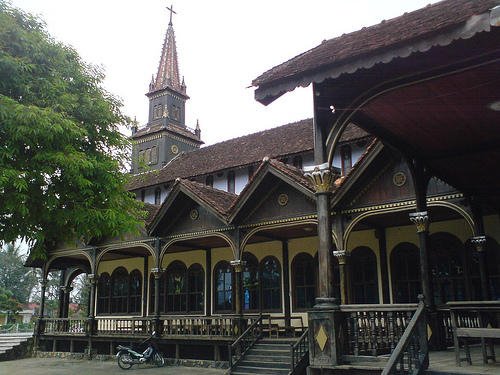Kon Tum: History of a Wooden Church

Kon Tum is the capital town of Kon Tum Province in Vietnam. It is located inland in the Central Highlands region of Vietnam, near the borders of Laos and Cambodia. If there’s one thing that puts the place in the international map of tourism, it is its Roman Catholic wooden church, built by the French during the colonial period. Kon Tum has a short but interesting history, mostly of wars and invasion. During the Easter Offensive on March 30, 1972, it was contested by two armies which thankfully failed to capture the place.
But three years later, on the same month, during the Ho Chi Minh Campaign, it was invaded and taken over. This resulted in many refugees who tried to escape the chaos and hardship by fleeing to the South Central Coast. But despite its seemingly difficult tale, Kon Tum produced several important relics which hold global significance even today. Its tribal villages located in the suburbs of the Vietnamese-reconstructed town are a fine example of a careful and delicate cultural preservation. But the Roman Catholic wooden church built in 1913 by a group of French priests at the capital is the pride of Kon Tum.
The architecture of the church is a blend between the stilt house design of the Central Highlands and a French seminary-style structure. The floor is made of pure wood and constructed about one meter from the ground. The columns are designed with intricate carvings. The main hall is large and elegant. It also has a small museum which features the history and culture of the local hill tribes. Although the French presence in Kon Tum went back as early as 1851, its overall influence and outcome produced positive results for the place, making it a popular tourist destination today.









